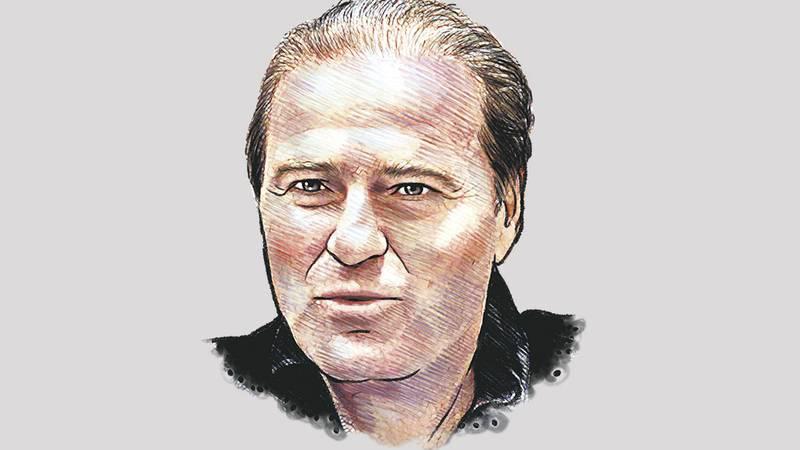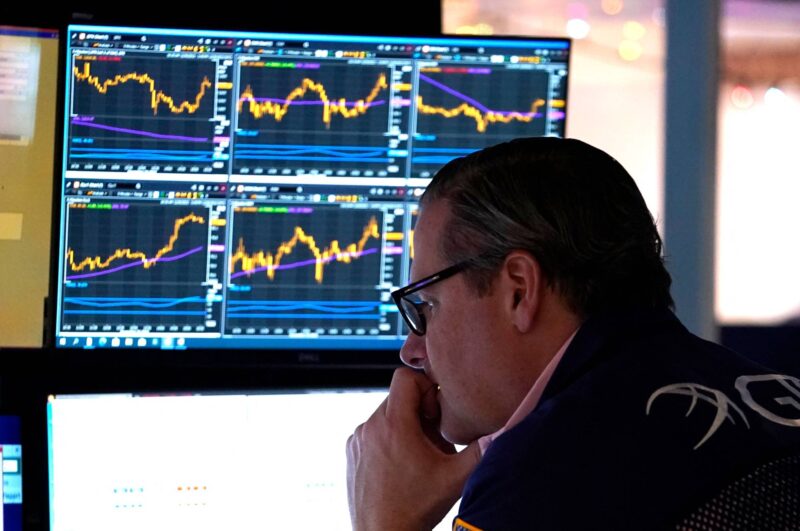By Joe Rennison
Jan. 3, the first day of U.S. market trading in 2022, looked like just another day in a stock rally that began when Barack Obama was still president. The S&P 500 hit a record high. Tesla, the company that upturned the auto industry and made many investors rich, rose 13.5% and came close to its own all-time peak.That Monday, it turned out, was actually the end of a market that for more than a decade had gone mostly in one direction, with the S&P 500 rising more than 600% since March 2009.
Just two days later, the Federal Reserve released the minutes from its previous meeting — a typically routine event on Wall Street — revealing that policymakers at the central bank were so worried about inflation that they thought they might need to accelerate how fast they raised interest rates.Investors took it badly, causing the S&P 500 to tumble 1.9% and sparking a stock sell-off that set the stage for the rest of the year.The past 12 months have marked a generational shift for financial markets as the Fed, racing to contain the worst inflation in decades, repeatedly jacked up interest rates. Its efforts have begun to pay off: Price increases have been slowing recently.But the Fed’s drastic actions to slow the U.S. economy, the world’s largest, have had widespread consequences.The year saw the end to an era of low interest rates that made borrowing cheap and encouraged investors to take risks — on the stocks of new tech companies, in cryptocurrencies and in debt markets — in the hunt for lucrative returns.Neither the S&P 500 nor Tesla has since reached the heights they achieved Jan. 3. The S&P 500, which finished lower on Friday, declined 19.4% for the year — its worst annual performance since 2008. Cryptocurrency giants such as FTX have fallen, and debt is no longer cheap.But even as the U.S. economy heads toward a possible recession, the Federal Reserve has said its job is far from over. Inflation, while starting to cool, is still far too high, and interest rates are predicted to rise further, foretelling more pain.”Central banks drove markets this year because of inflation and that will continue into 2023,” said Kristina Hooper, chief global market strategist at Invesco. “This is a very, very dramatic, history-making moment in time. We have all been witness to a sequence of events, starting with the pandemic, that has been extraordinary.”The Fed’s challenge became even harder in late February, when Russia’s invasion of Ukraine sent food and energy costs soaring, creating a crisis in poorer countries dependent on the import of oil and grain. In March, the Fed began to raise interest rates.Higher interest rates are central banks’ primary tool for combating inflation. When rates rise, borrowing costs also increase, slowing demand in the economy and in theory tempering further price increases. The yield on 10-year U.S. government bonds, which underpin borrowing costs across the globe, has soared 2.36 percentage points this year, its biggest annual rise on record for data going back to 1962. In turn, borrowing rates on mortgages, company bonds and other debt ratcheted higher.Higher costs also mean lower profits for companies, sending stock prices down. That proved especially true for tech companies, whose growth had been supported by low interest rates. The Nasdaq composite index, which is chock-full of tech stocks, has fallen 33.1% in 2022.As investors lost money in the stock market, and households faced ballooning costs from inflation, the air came out of other, more speculative markets as well. The price of bitcoin, one of the most well-known cryptocurrencies, tumbled and so-called meme stocks such as GameStop and AMC Entertainment, whose share prices were propelled higher during the pandemic by a new breed of amateur investor, fell throughout the year.Tesla, popular with the same crowd of investors, has dropped 65% this year, its worst performance since the company went public in 2010 and only the second year the stock has declined in value.Despite rising inflation, the U.S. economy remained resilient, while Europe faced an energy crisis and emerging markets such as Sri Lanka and Pakistan faltered. The relative strength of the United States made it a safe place for investors to put their money, and the influx of cash helped push the value of the dollar higher. For the first time in 20 years, the dollar was worth more than the euro.An unexpectedly dire report showing a collapse in consumer sentiment just days before the central bank was set to meet on June 15 spooked policymakers and helped send the S&P 500 into a bear market, defined as a fall of at least 20% from its recent peak — in this case, Jan. 3. The Fed had already raised interest rates twice, by a total of 0.75 percentage points — as much as it had forecast in December 2021 would be necessary for the entire year — and was gearing up for another rate increase, expected to be 0.5 percentage points.Instead, the central bank raised interest rates by 0.75 percentage points for the first time in almost three decades, indicating the risks the Fed attributed to rising inflation.Still, the turbulent events led some investors to feel that surely the worst was over. In July, as corporate financial reports started coming in looking better than had been expected, the stock market rallied. From mid-June to mid-August the S&P 500 rose 17.4%.For the Fed, rising stock prices created a problem by enriching investors and working against its efforts to lower inflation. At a widely watched economic forum in Wyoming, Jerome Powell, the Fed chair, sternly warned investors that the inflation fight was not over and that interest rates would need to rise considerably before the central bank would end its campaign. Stock markets began to fall again and the S&P 500 hit a new low in October.Heading into 2023, investors are setting themselves up for another fight with the Fed. Despite tremors from a wild swing in the value of British government debt in September, and then the unraveling of the crypto markets through November, the S&P 500 has risen almost 8% from its low.In December, the Fed increased interest rates to a target range between 4.25% and 4.5% — well above expectations at the start of the year. Policymakers also raised their forecasts for how high interest rates would need to rise in 2023, but investors have barely blinked. There are signs of inflation cooling, and some see a greater likelihood that the central bank will pause further rate increases sooner than it has indicated to allow the effects of the current high interest rates to seep into the economy.”I think the equity market right now is a bit glass half full and is not completely pricing in what the Fed and other assets are telling us,” said Todd Sandoz, co-head of equities for the Americas at Barclays.Adding to the risk are corporate profits, which some investors expect to be revised sharply lower in early 2023, as prolonged inflation and elevated interest rates start to bite into earnings.That could mean that stocks have further to fall.A year ago, bank analysts responsible for projecting where stocks and bonds would end in 2022 were somewhat optimistic.According to a Bloomberg aggregation of forecasts, even the most pessimistic prediction for the S&P 500 at that time — made by Mike Wilson of Morgan Stanley — thought the index would finish the year 10% higher than where it actually will. Now, the most optimistic strategist this year, Hugo Ste-Marie at Scotiabank, doesn’t expect the S&P 500 to make up that lost ground in 2023, while most expect the market to end roughly where it’s starting, after a dip early in the year.”Given what has happened over the past 12 months we all have to be prepared for a significant surprise again, whether it’s from inflation or Fed policy,” said Doug Porter, chief economist at BMO Financial Group. “We have to be brave in thinking about the possibilities.”






